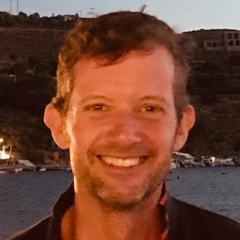It is increasingly apparent that Highly Active Antiretroviral Therapy (HAART) may not be the long-term solution to the management of HIV infection. Despite major improvements in morbidity and mortality in HIV+ve individuals, lifespan on HAART is less than for the HIV uninfected, there is unexplained morbidity on HAART (cardiovascular, renal, hepatic complications plus osteoporosis, dementia, ‘frailty’ and ageing), not all of which can explained by drug toxicities. In addition, the practicalities of global drug provision are currently untenable – achieving the US target of 80% HAART coverage in developing regions would account for half of the US foreign aid budget by 2016. Achieving a ‘sterilising cure’ (infectious disease model) or ‘drug-free remission’ (tumour model) must therefore become a priority for global HIV management.
There are fundamental issues impacting eradication, related to a persistent proviral HIV reservoir. Stopping HAART results in rebound of viraemia to levels similar to those recorded pre-therapy, HIV DNA can be detected in PBMCs and lymphoid tissue at all stages of therapy, the cellular and anatomical HIV reservoirs are not defined, there is no ‘undetectable viral load’ on HAART (median value is 3.1 copies/ml) and we do not fully understand the processes by which latency is induced, or how transcription is activated.
The CHERUB co-operative (Collaborative HIV Eradication of Reservoirs: UK BRC) is a NIHR-funded platform funded to explore strategies for achieving HIV eradication in the UK. CHERUB comprises internationally recognised researchers from Oxford, Cambridge, Imperial College, UCL and King’s College, and the associated NHS Trusts. Through CHERUB, we are recruiting new patient cohorts to allow studies varying from basic laboratory research, to ex vivo analyses, to large-scale clinical trials of novel interventions.
The role of Oxford University within CHERUB is to lead the scientific strategy (John Frater is co-PI and Scientific Lead). Specifically, our work will focus on quantification of viral reservoirs, sequence analysis by standard and next generation models, immunology (predominantly looking at the role of CTL in remission strategies) and more fundamental research into new approaches to eradication such as nanotechnology. Working in collaboration with NHS Trusts and also with the pharmaceutical industry, we aim to push forward the boundaries in this new and exciting field.






